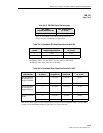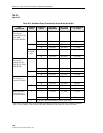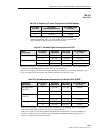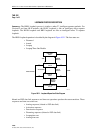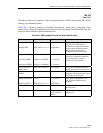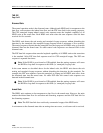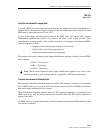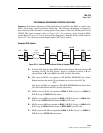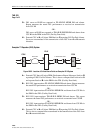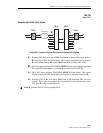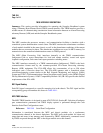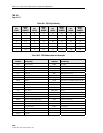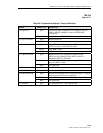
ADCP-61-471 • Issue 4 • June 2000 • Section 2: Operation and Maintenance
2-262
© 2000, ADC Telecommunications, Inc.
TAD-102
Page 5 of 5
Loopup State
The selected HDSL unit provides continuous loopup of the DS1 signal in the loopup state. At the
same time, the data flow is monitored for the inband deactivation sequence, the inband disarming
sequence, and the ESF data link disarming sequence. A loopup time-out event forces a return to the
armed state. No other control code sequences are detected in the loopup state.
Transition from Loopup State to Loopup/No Time-out State
A single inband 16-bit control code commands all HDSL units to go from the loopup state to the
loopup/no time-out state. This loopup time-out disable code must be received for at least three
seconds.
When a unit is in the Loopup/No Time-out State, the loopback remains active until either the 16-
bit deactivation code or disarm code (5-bit inband or ESF data link) is received.
Transition from Loopup to Armed State
A single inband 16-bit deactivate control code sequence is a command to all HDSL units to
move from the loopup state into the armed state. All HDSL units use the same deactivation
sequence. The deactivation sequence lasts a minimum of five seconds
When the units are back in the armed state, they still respond to activation sequence control
codes. All HDSL units move from the loopup state into the armed state when the selected loopup
time-out value is reached. The loopup time-out is programmable via the MPU.
Transition from Loopup to Disarmed State
HDSL units can be commanded to move from the loopup state into the disarmed state all at the
same time by using the standard 5-bit inband disarming sequence, or by using the ESF data link
sequence.




